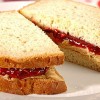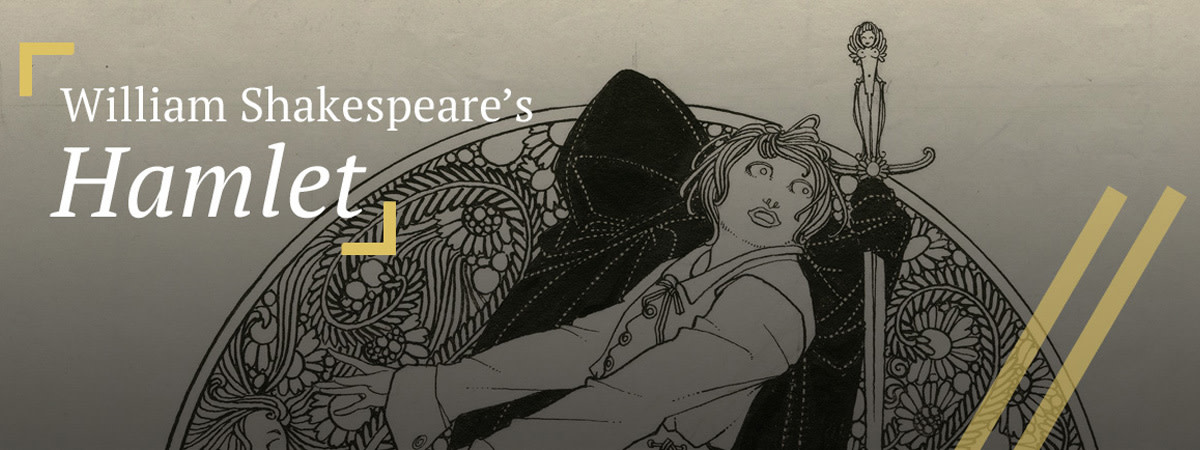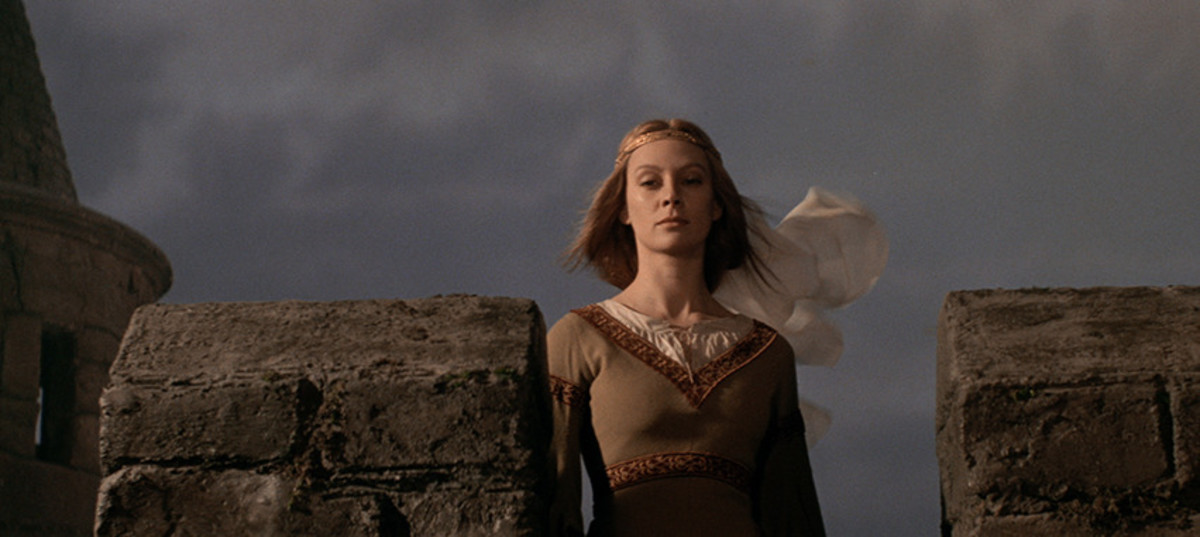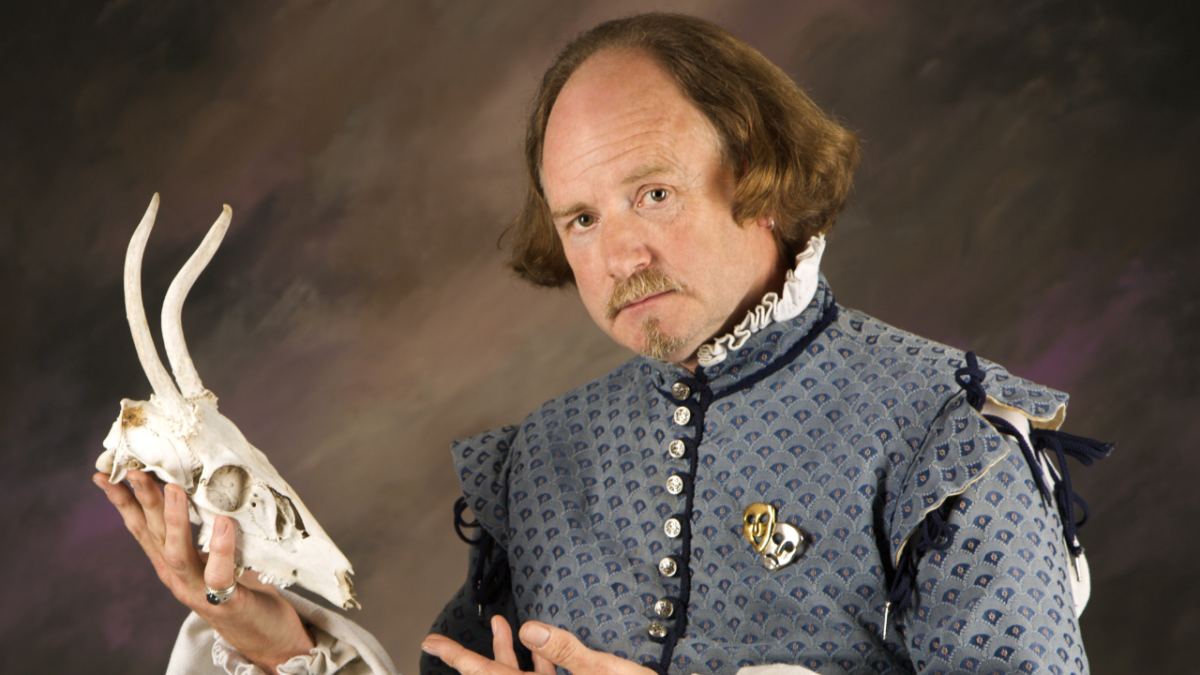- HubPages»
- Books, Literature, and Writing»
- Literature»
- English Literature
Production History: Representing the Fairies in A Midsummer Night's Dream
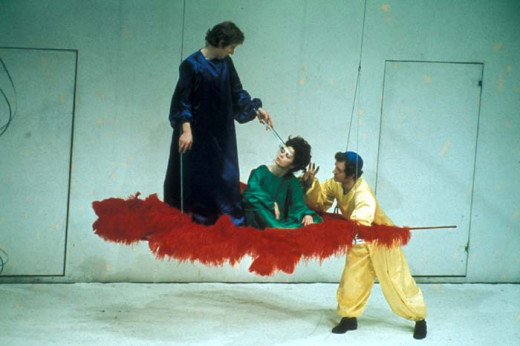
In the present day, common conceptions of fairies hold them to be childish, the delicate and benign stuff of bedtime stories. Lovely and feminine, they inhabit the popular imagination as a little girl’s fantasy, providing the basis for innumerable toys and costumes—and even a popular “Fairies” franchise, marketed by Disney alongside their “Princess” line. However, the folkloric figures from which these modern, sanitized and commercialized fairies trace their origins are less unambiguously benevolent. As Jesse Lander writes in his recent essay “Thinking with Fairies: A Midsummer Night’s Dream and the Problem of Belief” (2012), early modern fairies were not merely the subjects of childhood fancy, but supernatural creatures of ambiguous motivation, represented sometimes as helpful, sometimes malevolent—and even classified by the church as demons (45). Threats of fairy abductions could be used to keep children in line, and fairy stories even occasionally served as a “weapon of the weak,” providing honor-preserving explanations for powerless people in difficult situations. This way, euphemisms might allow a child of rape to be considered a fairy “changeling” or found money to become “fairy gold,” thereby helping to assure “smooth social functioning” in spite of unpleasant realities (43). Such functions position early modern fairies at the very least as agents of mischief or even possibly as a chaotic, potentially sexualized force.
Considering this, it is perhaps fitting that recent productions of Shakespeare’s A Midsummer Night’s Dream have turned from the long-running Victorian tradition of representing fairies as tulle-draped benign, feminine, balletic figures in favor of a myriad of alternatives perhaps more representative of the complex role occupied by such supernatural creatures in Shakespeare’s own time. Starting at the turn of the twentieth century, the Midsummer fairies have been orientalized and exoticized, often represented as highly dangerous or sexual beings, as a result stirring some contention over whether the fairies and the forest they inhabit should be seen as benevolent and harmless or potentially somewhat sinister. Particularly pivotal to this debate have been Jan Kott’s critical essay “Titania and the Ass’s Head,” found in his influential book, Shakespeare: Our Contemporary (1964), and Peter Brook’s revolutionary 1970 production for the Royal Shakespeare Company.
Very little is known about how fairies were represented in the earliest productions of A Midsummer Night’s Dream. Although the text gives us no real clues as to their costuming, Gary Williams suggests that Oberon, Titania, and their attendants “would have been at home among the Greeks,” as early modern art often mingled classical figures with folktale creatures such as fairies (28). This suggestion is borne out through Inigo Jones’ illustrations of costumes used in Ben Jonson’s contemporary Masque of Oberon. Here, Titania is represented in flowing classical robes with a small pair of wings attached to her shoulders, while Oberon, in a short suit of armor and plumed helmet, looks a bit like a Roman centurion (Williams 29-30).
However, contemporary depictions of fairies and similar supernatural creatures are not universally so dignified. As a number of scholars indicate, fairies were often seen as demons at the time (Lander 45). According to Kott, Puck in particular may potentially be seen both as “Robin Goodfellow [and as] the menacing devil Hobgoblin” (108). This reading suggests that the first fairy to speak to Puck may actually use “endearing terms” out of fear, in order to pacify him (108). Additionally, Kott suggests that Puck’s mischief-making powers, including self-multiplication and travel “quick as thought” are actually akin to the abilities traditionally ascribed to devils (109). Finally, as an expert manipulator, “pull[ing] all the characters on strings,” in Kott’s view, Puck should be seen not simply as “a clown,” but rather “a faun, a devil, and Harlequin, all combined” (110). This view of Puck is hardly universal, as both Katharine Mary Briggs and Gary Williams contend that in spite of his somewhat dubious origins as a mischievous or even infernal folk character, Shakespeare’s version is “a gentler spirit of mischief… whom Shakespeare has rendered more poetically and with a touch of Cupid” (Williams 31). However, even Briggs and Williams acknowledge Puck’s origin as a faun or devil, suggesting that audiences might at least have been aware of a potentially dangerous connotation to the character during early theatrical runs.
In spite of this, for many years the predominant tradition represented the fairies of A Midsummer Night’s Dream as unambiguously gentle, delicate, and lovely. After spending the eighteenth century largely superseded by operatic adaptations (Williams 61), when Shakespeare’s text did return to the stage, it was accompanied by the vestiges of this musical tradition. Accordingly, beginning with the landmark productions of Lucia Elizabeth Vestris in London (1840) and Ludwig Tieck in Potsdam (1843), the play became closely associated with spectacularly beautiful forest scenery, balletic fairy dances, and a famous musical score by Felix Mendelssohn (Williams 93). Further eliminating any hint of menace, Victorian productions also frequently cut out lines that could be interpreted as threatening, dark, or sexually suggestive. For example, Vestris’s version omitted Titania’s lines on the pregnancy of the Indian boy’s mother and Puck’s references to Hecate, screech owls, and other ominous elements of the night (Williams 98). Finally, Vestris’s production even further diminished the possibility of viewing the fairies as sexually threatening by beginning the tradition of casting women in the role of Oberon, a decision that persisted through every major production of the play until 1914 (Williams 93), causing the fairy king and queen to perhaps appear more a contralto and soprano duet than a clearly conjugal pairing. Victorian productions usually cast the remainder of the fairy attendants as adult women as well. Typically clad in short dresses of tulle or gauze, with lines and actions completed in music and dance, these fairies were perhaps alluring to viewers, but in no way sexually aggressive or threatening (Williams 96). This benignly pleasing aesthetic is captured in the comments of Vestris’s reviewers, who described the fairies as “hosts of handsome girls, all having well-formed limbs” and the overall effect of the spectacle—which even involved simulated flight—as one of “female loveliness in suspense” (qtd. in Williams 96).
Representations of the Midsummer fairies continued in a similar vein until the controversial interpretation of Harley Granville Barker in 1914. In an attempt to focus attention on Shakespeare’s text rather than the dance and musical elements that had been foregrounded throughout the nineteenth century, Barker stripped away the beautifully detailed forest scenery, Mendelssohn’s music, and the fairy ballet (Williams 143, 150). Believing that “The fairies are the producer’s test,” Barker took a step away from the expected tradition, rendering them strange and otherworldly by covering them entirely in gold leaf and intricate decoration rather than the usual diaphanous fabric (Williams 147-50). This decision seems to have baffled critics. Writing for the Times, A.B. Walkley questioned if Titania’s Indian boy may have occasioned the fairies’ oriental appearance, which he suggested was akin to “Cambodian idols” (qtd. in Williams 148). Meanwhile, Walter Pritchard Eaton offered lukewarm approval of the strange costumes and mechanical choreography, concluding that “These stiff gold fairies are better than the more conventional representations, even if they do rather orientalize a purely Elizabethan play” (qtd. in Williams 148). Although hardly a resounding success, this production paved the way for later interpretations that would represent the fairies in a variety of ways widely differing from the longstanding, familiar balletic tradition. In a 1915 interview, Barker even explained his challenge to the traditional elaborate Dream ballets with an oddly prophetic comment: “What is really needed is a great white box. That’s what our theatre really is” (qtd. in Williams 152). This statement would come to full and literal fruition in Peter Brook’s landmark 1970 production with the RSC.
Further paving the way for future innovative—and especially darker—representations of the fairies were Max Reinhardt’s thirteen stagings of the play over the course of thirty years, starting in 1905 and ending with a 1935 film (Williams 164). While the lush forest scenery and gauzily costumed fairies, played by children and dancers, hearkened back to Victorian tradition (Williams 167), a satyr-like Puck (168) and darkly costumed, “slightly sinister” Oberon (175-6) presented a marked departure from previous, more benign characterizations. Additionally, in the film, two inventive blocking choices rendered Reinhardt’s enchanted forest a more potentially frightening location than previous versions. First, at the end of a solo dance, delicate First Fairy Nini Theilade was carried off by a faceless, black, masculine figure, with the spotlight cast on her narrowing until only her fluttering hands were visible (Williams 176). Later, when Bottom was returned to human form, he “felt for the missing ass’s ears and then made a fifty-yard run across the vast acting space to the pond, where, seeing his own reflection, he screamed in relief and danced off through the trees” (175). Coupled with the machinations of an unusually sinister Oberon, Bottom’s relief made it clear that—even if ultimately harmless—the fairy world was just an idealized fantasy tableau, but a potentially frightening place to inhabit (175).
The years that followed continued to search for an alternative to the Victorian tradition, occasionally taking some radical turns along the way—and with mixed success. In what was perhaps the most striking alternative costume choice since Granville Barker’s “Cambodian idols,” George Devine’s production in Stratford-upon-Avon (1954) represented the fairies as elaborately rendered exotic birds and insects and Puck as a toad-like creature (Williams 197). Shortly afterward, Peter Hall’s 1959 RSC production somewhat concretized and eroticized the previously airy, ethereal beings. Oberon and Puck appeared in courtly costumes, complete with neck ruffs, but bare footed and bare legged from the knee down—a decision which Muriel St. Clare Byrne criticized as showing “an inexplicable lack of taste” (qtd. in Williams 208). Titania, meanwhile, was a “sensuous, undersea queen, finned, barefoot, and crowned with wild white hair,” and her interactions with Bottom took on a more clearly erotic tone (208). Finally, both Oberon and Titania’s attendants wore a mish-mash of court dress, classical armor, and country garb, perhaps reflecting the Elizabethan tradition of mingling classical and folk elements in fairy stories more than any other costuming choice in centuries. Although the entrances of Hall’s fairies were accompanied by the soft tinkling of bells (208), it seems that these costume choices—baring fairy feet and flesh and dressing the fairy court (with the exception of Titania) similarly to mortal courtiers, warriors, and peasants—must have rendered them less more clearly physical, earthly beings. Adding to this effect, Hall’s 1969 film version portrayed the forest not as a shimmering, pristine fantasy world, but a messy, confusing, frustrating place, with the lovers becoming spattered with mud in their pursuit of each other and the fairies rendered with dirty faces (Williams 210). Such attempts to render the fairies as physical—or even animal beings, in Devine’s case—were not universally lauded, possibly because they defied the expectation that the fantasy world of the play should be beautiful. Hardly enchanted, one unimpressed reviewer of Devine’s production wrote that “There was an odd feeling of dead leaves in the air” (qtd. in Williams 197). Later, many of Hall’s critics would complain that the actors’ language lacked music and beauty (Williams 212). In these productions as in Barker’s, the shimmering façade of previous productions had been stripped away, but reviewers seem to have been at a loss to identify something to value in its place. Golden idols, birds, and more naturalistic performances were all met with more confusion than appreciation.
1964 marked the groundbreaking English translation of Jan Kott’s Shakespeare: Our Contemporary. Along with Antonin Artaud and Berthold Brecht, Kott was instrumental to combating an idealized, romantic aesthetic in the theatre (Williams 213). In his essay “Titania and the Ass’s Head,” Jan Kott directly challenged such representations of A Midsummer Night’s Dream, suggesting that its fairy inhabitants and their magic were more aptly represented as threatening and erotic than as graceful delicate, and ornamental. Kott reminded readers of the possibly demonic origins of Puck (107-110), foregrounded the “bestiary” of “spotted snakes… / Thorny hedgehogs… / Newts and blindworms” (II.ii.9-11) mentioned by Titania’s fairy attendants (117), and suggesting that Bottom’s transfigured state is meant to represent the sexual potency traditionally ascribed to asses (117-20). Therefore, instead of a silly comedy in which a queen is led to misguidedly lavish affection on a lovable animal, we are left with the sinister image of a beautiful woman exposed to potentially brutal virility of a part human, part animal monster as an act of cruel, vengeful manipulation by her husband. Accordingly, Kott pictures Titania’s fairy attendants not as innocent, youthful dancers, but as “old men and women, toothless and shaking, their mouths wet with saliva, who sniggering procure a monster for their mistress” (118).
Kott’s influence can be felt in subsequent Dream productions from the mid-1960s onward. Perhaps most shockingly, John Hancok’s 1967 off-Broadway production was set in a plague-ridden Athens, where Theseus reveled in his captive bride, who languished, clad in leopard skins, in a bamboo cage (Williams 216). Although Peter Brook is most famous for such a casting choice, this earlier production also doubled the roles of Theseus and Oberon, Hippolyta and Titania (216-7), drawing parallels between the oppressive and manipulative qualities of each relationship. In a radical departure from tradition—and a clear reflection of the contemporary prevalence of pop art—Titania wore a Wonder Woman costume whose original sketches feature battery-powered lights placed over her genitals. In Hancock’s words, Oberon was depicted as “an empty shroud—a silver lamé shroud, with, as far as you can see, nobody inside it. But with a hand—and rainbow hand—that worked magic. The other hand was a dead stick.” Meanwhile, his attendant, Puck, was represented as an excessively muscular, scantily clad Cupid, making his initial entrance by descending onto the stage on an “overstuffed red satin heart on a chain.” Finally, the remaining fairies were not represented by actors at all, but by bizarre puppets manipulated on strings, including “insects, hairy bats, cobwebs, and dolls with wings” (217). The overall effect seems to have confused and irritated critics, whose headlines dubbed it “A Midsummer Nightmare” and an “Opium Dream,” often complaining that the director’s interpretation was simply campy and distracting. Others, however, rightly saw the hand of Kott in the play (218). Highlighting sexual elements, representing the fairies themselves as the sort of horrific “bestiary” indicated by Kott, and even portraying Oberon as a sort a sinister figure akin to a fairy Grim Reaper or Ghost of Christmas Yet to Come, Hancock’s production reveled in the more disturbing elements of the text that previous versions had glossed over or even cut from the script outright.
Perhaps the most influential production of the twentieth century, Peter Brook’s 1970 production with the RSC adopted ideas from Kott without allowing them to suffocate the production with bizarre gimmicks or turn the play into something completely sinister and devoid of tenderness. Beginning with a blank white box rather than a gorgeously detailed forest as his setting (Williams 224), Brook portrayed the fairies as clowns or circus performers, dressed in brightly colored satin costumes and traveling via trapeze (225-6). The other fairies were played by full grown men and women similarly dressed and interacting with the lovers and mechanicals with a series of odd and playful props, such as “giant green slinkies on wires” (Maher 433). These fairies sung Titania to sleep with a lullaby sounding “something like an Indian Vedic chant” (Williams 227), and when they carried Bottom off to Titania’s bower, one thrust his first between Bottom’s legs, his arm representing an erect “oversized ass’s penis” (Maher 431). Discussing Oberon’s motivations toward his queen, Brook suggested that:
Oberon’s deliberate cool intention is to degrade Titania as a woman… Yet there’s no cynicism in Oberon’s action—he isn’t a sadist. The play is about something very mysterious, and only to be understood by the complexity of human love. (qtd. in Williams 227)
Therefore, while the Brook version rejected the gorgeous imagery of previous productions and acknowledged the darker, more erotic aspects of the play, it stopped short of Kott’s nightmarish vision. Through the fairies’ representation as circus performers, something of the wonder of traditional productions and the playfulness of variations like Hancock’s were preserved without descending into daintiness or oversaturation with gimmicks. The “Vedic chant” of Titania’s attendants perhaps even played on possible orientalist elements without overindulging in them as Granville Barker’s fairies had. Brook’s production was massively successful, possibly owing in no small part to this engagement with a variety of the possibilities; it acknowledged the dark and erotic without losing the opportunity for comedy and play.[1]Accordingly, the production ended with a “feast of friendship,” in which actors rushed to shake hands with the audience when Puck spoke his famous lines: “Give us your hands, if we be friends / And Robin shall restore amends” (qtd. in Williams 231).
Up to the present, productions of A Midsummer Night’s Dream continue to diverge from the Mendelssohnian balletic tradition to experiment with darker elements, with varied success. Those which skew too far into the nightmare realm of Kott—such as a 1993 production directed by Robert LePage which emphasized the confusion of the darkened forest by staging the action in “a pool of black, swampy water,” through which actors trudged with difficulty (Maher 441)—are often met with confusion, as comic elements are lost in the bleak and sinister representation. However, those which manage to balance the darker elements in which more recent critics have taken an interest with acknowledgement of the playful comedy also present in the text are more able to unlock its rich possibilities in performance.
[1] Mary Maher similarly argues that successful productions of A Midsummer Night’s Dream cannot be so dark that they are unfaithful to Shakespeare’s intention that the play be a comedy (446-7). I contend that engagement with the erotic and potentially dangerous elements of the play—the manipulation of lovers by Puck and Oberon, the forest at night, the threat of death which hangs over Hermia—is also necessary to fulfilling the rich potential of the play in production.
